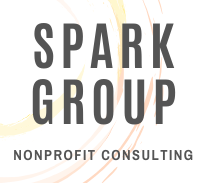Proactivity: the Key to Nonprofit Sustainability
Nonprofit organizations feed and clothe individuals living in poverty, provide community education, and advocate for justice issues. They are vital within our society, and therefore their sustainability should also be a crucial concern.
A culture of reactivity is pervasive in some organizations regardless of the scale of the nonprofit. Additionally, some nonprofit leaders are committed to the narrative that charitable work should be challenging and chaotic. This dynamic leads to a lack of mission impact and a higher risk for nonprofit failure.
For some, the intrinsic motivator of a desire to help vulnerable populations is made evident by the sense of feeling needed. Those leaders may feel subconsciously comfortable in an environment where there is always a daily fire in need of extinguishing. However, daily reactivity limits the ability to plan and thrive on an organizational level.
5 Proactive Practices to Adopt
For organizations to move from the culture of reactivity to one of proactive planning, they must give up solely focusing on the concrete problems of day-to-day operations and begin to focus also on abstract concepts.
Organizations must begin to ask questions like "Why are we struggling?" "What are our assets?" and "How do we build up our capacities?" to stop the cycle of reactivity.
The good news is that there are several proactive practices nonprofit leaders can engage in to strengthen their organizations – and you don’t need to reinvent the wheel!
Here are five proactive practices that lead to increased sustainability:
Evaluation:
At the end of each event, program, or fiscal year, get in the practice of documenting what went well and what needs improvement.
Design:
Before you launch a new program or event, take the time to consider the audience, need, goal, and action steps needed for success.
Implementation:
Start new initiatives small and keep a close eye out for what is working like you assumed and needs adjustment.
Boundaries:
Place clear limits around what you can reasonably accomplish in a given time period and what might be beyond your current capacity.
Plans:
Engage in proactive processes like strategic, fund development, succession, and communications planning.
While all of these practices are helpful, prioritizing and guarding time for proactive behaviors is the most important factor in achieving greater sustainability. It causes nonprofit leaders to see an emergency playing out and make the conscious design to NOT run in and save the day. If you are operating out of a reactive environment there will always be an emergency attempting to draw your attention away. Prioritizing proactivity is key.
If you’re curious about implementing proactive behaviors in your organization and looking for more help then contact us today.
⭐ Join my weekly newsletter where I share tons of exclusive tips, tools, grant opportunities, and resources to my subscribers. Subscribe on the Spark Group home page.




